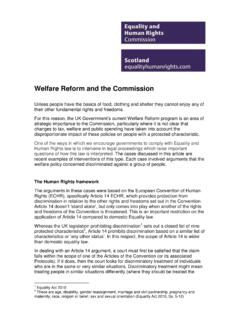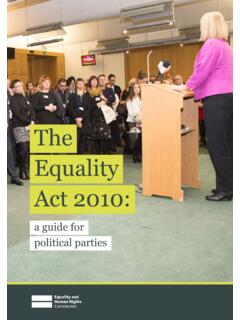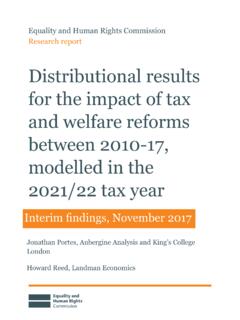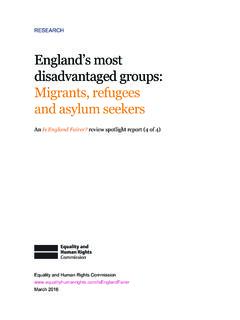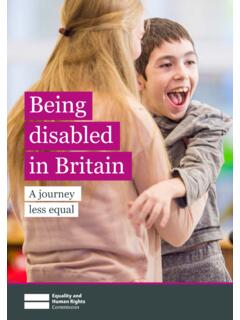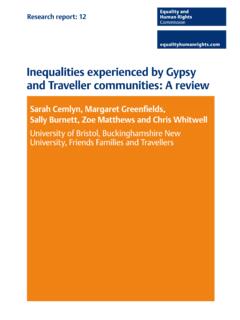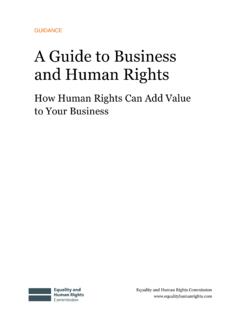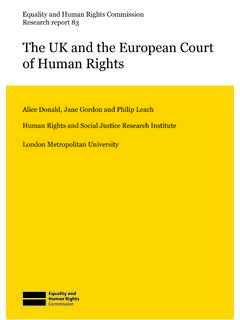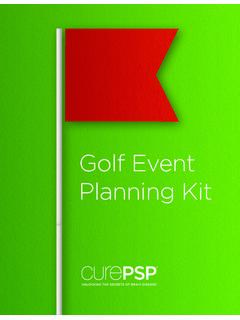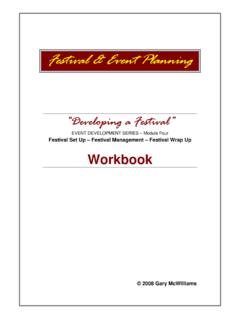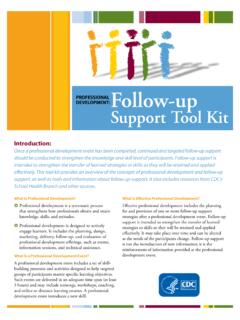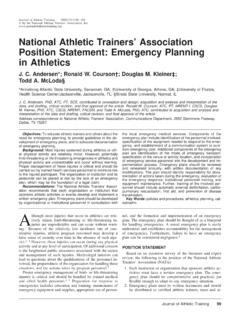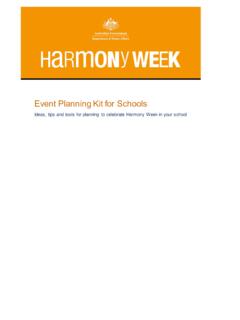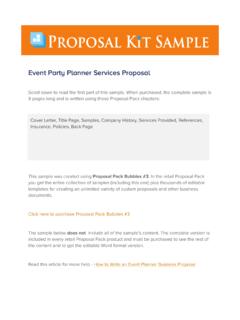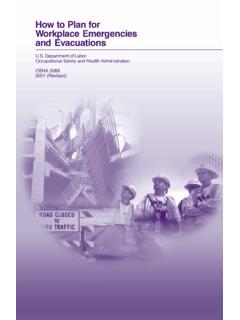Transcription of Housing and Disabled People Engaging with Disabled …
1 Engaging with Disabled People An event planning guide Engaging with Disabled People 2. Contents event planning checklist 4. Arranging the event 4. Finding a venue 6. Publicising 8. Final preparations 9. On the day 11. Facilitators' guide 12. Chairperson briefing 12. Presenters' briefing 14. Easy capacity-building for access groups 16. Glossary of alternative formats 17. Useful contacts for alternative formats 17. Factsheet on hearing enhancement systems 18. 1. Induction loop 18. 2. Radio systems 19. 3. Infrared systems 19. 4. Soundfield systems 19. Contacts 20. Engaging with Disabled People Engaging with Disabled People 4. event planning checklist The following checklists highlight things to consider when planning an engagement event involving Disabled People . 1. Arranging the event Additional notes Check the date against Check interfaith calendars for key religious holidays. major religious festivals Christian holidays will largely coincide with bank holidays and holidays ( events in weeks containing bank holidays usually have a lower turnout) and you should also consider other religious holidays that may prevent someone from attending, for example, Yom Kippur or the date against school term times (where applicable).
2 Check that the timing Consider times that may be awkward for workers, families, is likely to be suitable etc. At least two events at different times will be helpful. for most stakeholders Avoid early starts and peak travel times. Provide the contact Consider how to share information in line with data details and deadline protection legislation. date for requesting Provide a deadline date, as it can be very difficult to reasonable adjustments find communication professionals, such as British Sign Language interpreters, at the last minute Provide the contact Label any food, including pork products, and segregate details and deadline meat from vegetarian items. If a nut allergy is advised, date for dietary needs you may prefer to make up a separate plate even if nut-free products have been requested. Agree the briefing with Arrange a briefing sheet or meeting to ensure appropriate anyone presenting language, description of any images, and how to time for or chairing additional support needs such as interpreters.
3 Doing this early will help you to create a realistic timetable. Stress the importance of not over-running. People may rely on medication, food or support needs, so meetings that over-run can cause distress. Engaging with Disabled People 5. 1. Arranging the event Additional notes Agree the deadline dates Warn anyone presenting that materials may need for materials with presenters to be provided well in advance so they can be produced in alternative formats. Make sure that programme It's important to allow enough time for support needs, timing allows for support including translation and language support services, needs interpretation of tactile materials, and longer breaks to allow for physical access needs to toilets, for example. Provisionally book Remember that sign language interpreters need regular communication support rests, so you may need to book two interpreters to cover longer events (you may also need lipspeakers).
4 Engaging with Disabled People 6. 2. Finding a venue . the essentials Additional notes Location If you have a venue that is already familiar to consultees, this would be helpful. Is there an option to take the consultation nearer to their location? For example, if you want feedback from existing tenants in one location, there may be a community hall you could use to minimise inconvenience and simplify travel planning . Easy to reach by public Publicise telephone numbers for taxis, as well as public transport transport information for getting to the venue. Accessible parking Check that there is level parking nearby and accessible/. Blue Badge bays within 50 metres (provide a link to the Blue Badge map if possible). Vehicle drop-off available close Typically, within 50 metres is acceptable. to the building Step-free access and egress Ramps should be no steeper than 1:12. (level, ramped or lift access). Enough space available Ensure routes to and from the room are wide enough.
5 Inside the meeting area Main routes/aisles should be at least 1200mm wide, but preferably 1500mm wide. Aisles to tables should be at least 1m wide, but preferably 1200mm. Wheelchair users will welcome being given a choice of where to sit. Lift access, if required Check lifts are at least 1100x1400mm internal size. Accessible toilets are suitable Some will need to be large enough for a wheelchair user (typically 1500x2200mm, although 1500x2000mm may be manageable, or 1700x2200mm for exemplary access). If you have a venue with a Changing Places toilet as well, that would be beneficial. Suitable refreshments available It is usually simpler to provide drinks only (dairy-free alternatives to cow's milk could be offered if providing hot drinks). If providing a lunch a simple buffet is best, but consider Halal, vegan, gluten free and other dietary requirements, with special attention to any allergies notified. Engaging with Disabled People 7.
6 2. Finding a venue . the essentials Additional notes Staff fully trained Disability equality and deaf awareness training for venue reception and all presenters and support staff. Presentation If using PowerPoint, is the screen visible for everyone (that is, large enough)? Sufficient light levels Does the main room have even lighting (without any flicker). that is good enough for reading (at least 350 lux?). Sufficient power points Make sure there are enough power points for charging specialist equipment. Hearing enhancement Ask a hearing aid wearer to check it is working or invest systems available and working in a testing kit there is a wide variety on the market. A roving microphone If this is not available, then make sure all presenters and for questions the chairperson understand the importance of repeating questions and getting feedback from the consultees. Robust and safe fire Entry level rooms are preferred as they make fire evacuation evacuation for everyone simple.
7 If you choose an upper floor level, ask to see their fire procedures for evacuating anyone who is unable to use the stairs. Avoid choosing a space below ground unless there is a suitable lift for use in a fire. Engaging with Disabled People 8. 3. Publicising Additional notes Printed materials leaflets Are the invitations in a minimum of 12 point sans serif and posters following font (ideally 14 or 16 point)? accessibility principles (see page 19 for more information on alternative formats). Maps and directions Maps should be supplemented with easy read directions provided from nearest transport links. Provide a phone number for directions on the day in case of difficulty. Electronic mailshots Embed the details in the emails as well as using by email attachments. Accessible information An accessible website with clear information on a website on travel options and facilities at the event. Direct invitations sent to Any existing access group in the area is the obvious first established user groups point-of-call.
8 Local charities or representative groups for medical conditions and disabilities will be able to disseminate your request for consultees if you would like more People . Contact number and email Nothing is better than a reassuring voice on the end of the for enquiries provided phone when you are lost, late or need to give notice of a last minute cancellation (whether a presenter or a consultee). Social media used for wider Try all three as they often reach different audiences. reach for example, Twitter, LinkedIn is more for a professional audience, but LinkedIn and Facebook will of course capture People working in the area. Engaging with Disabled People 9. 4. Final preparations Additional notes Have materials ready to A few sheets of cream card, large black marker pens, make temporary instructions Blu Tack and scissors. and signs Take a magnifier A handheld magnifier or a smartphone app, such as Magnifier, can help with last-minute requests for larger print documents.
9 Take a task light A portable, battery-operated LED reading light can make all the difference to People with a visual impairment. If name badges are to Labels can mark some clothing items and not everyone be worn, have different can manage a clip or pin consider having a lanyard options for display available or simply allowing someone to display their name on the table instead of wearing it. Immediately on arrival, A back-up fast call-out service for repairs may be justified. check that any essential lifts are working Can additional parking Have plastic bollards available, or temporary notices, be provided if needed? to reserve additional parking bays. A reminder sheet for More information is provided in the facilitators'. presenters to describe guide on page 12. images and repeat questions using the microphone People to help facilitate You can never have too many helpers. They will need the event to be trained in disability equality and awareness, as well as being natural communicators.
10 Tasks for facilitators include managing parking, arrival and refreshments, as well as helping to explain tactile displays. Provide alternative formats If none are requested, have at least one large print version. for handouts An easy read version may also be helpful, if available. Braille is usually only provided if requested in advance. Engaging with Disabled People 10. 4. Final preparations Additional notes Ensure displays and Use large enough fonts and provide tactile versions drawings are suitable if requested in advance. for all Take some tactile labelling, also known as Bumpons', to assist those with visual impairments. Portable hearing Consider having a portable wireless system (radio enhancement system or infrared) as a backup in case of any issues. Refreshments dietary Make sure you have catered for dietary needs. options provided and Provide straws for drinks, finger foods for easy management, food easy to manage and make sure there are People on hand to help.


